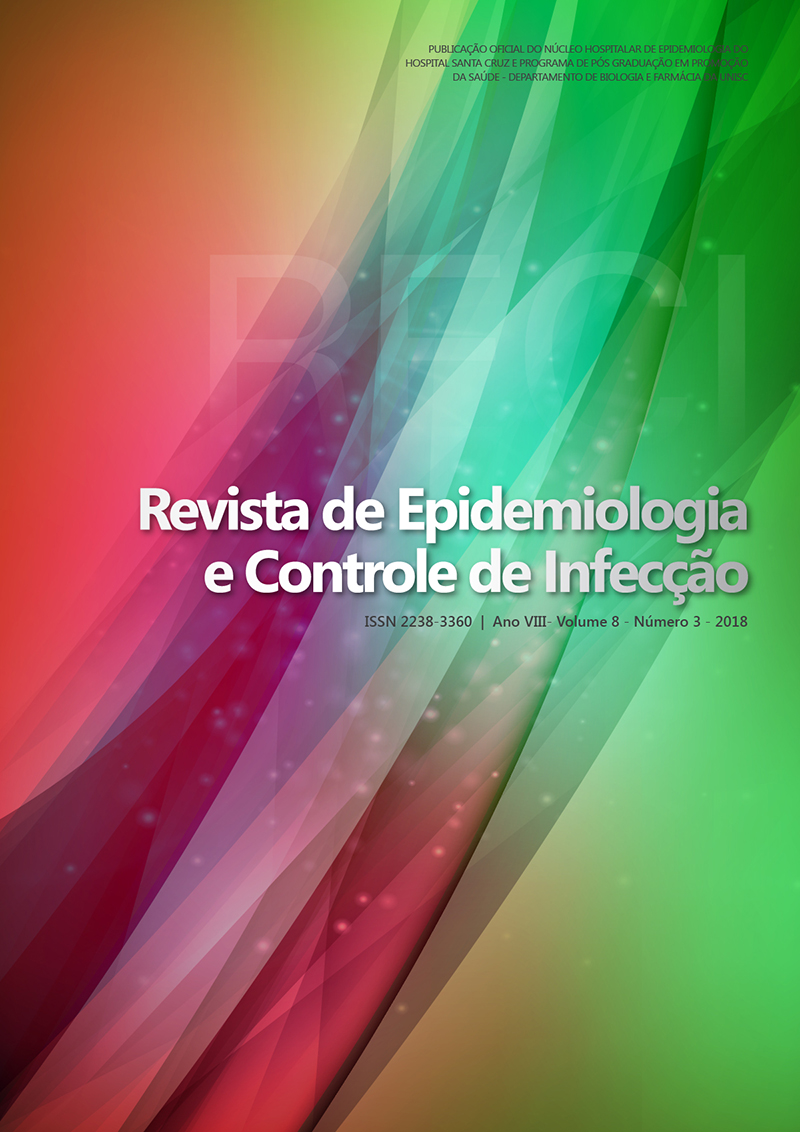Surveillance of neurological syndromes reported at a federal hospital in a context of Zika, Chikungunya and Dengue epidemics
DOI:
https://doi.org/10.17058/reci.v8i3.11936Abstract
Background and Objectives: The occurrence of neurological manifestations in the context of the circulation of Dengue virus (DENV), Zika(ZIKV) and Chikungunya (CHIKV) in Brazil is a challenge for epidemiological surveillance. This study aims to describe the clinical epidemiological profile of patients reported in a federal hospital with neurological syndromes potentially associated with these etiologies, in 2015 and 2016. Methods: Observational study, with analysis of secondary bases and data collection in medical records and epidemiological surveillance forms. We included cases reported in 2015 and 2016, meeting the criteria: a)neurological syndrome of undetermined originand registry of previous viral infection up to 60 days before neurological symptoms, laboratory confirmed or not; b) neurological syndrome without prior viral infection up to 60 days before neurological symptoms, with laboratory confirmation for DENV, CHIKV and ZIKV in CSF, serum or urine. Variables analyzed: sex, age, race/color, scholarity level, municipality of residence, signs and symptoms, syndromic andetiological diagnosis of the neurological symptoms, place/ length of hospitalization and evolution. Results: 72 cases reported: 61.1% men, median age 37 years, neurological diagnosis of Guillain-Barré syndrome (GBS) 34.7% and meningoencephalitis 31.9%. Thirty-nine cases (54.1%) were classified as associated with arboviruses, 14 of them by laboratory criteria (3 ZIKV, 6 CHIKV, 4 DENV, 1 DENV + CHIKV) and 25 by clinical-epidemiological criteria. In the laboratory confirmed the percentage of meningoencephalitis (57.1%) exceeded SGB (35.7%). Conclusion: The differential diagnosis among arboviruses in this context is a challenge for epidemiological surveillance, highlighting thepredominance of GBS and meningoencephalitis. Keywords: Arbovirus Infections. Encephalitis, Arbovirus. Guillain-Barre Syndrome. EpidemiologyDownloads
Downloads
Published
How to Cite
Issue
Section
License
The author must state that the paper is original (has not been published previously), not infringing any copyright or other ownership right involving third parties. Once the paper is submitted, the Journal reserves the right to make normative changes, such as spelling and grammar, in order to maintain the language standard, but respecting the author’s style. The published papers become ownership of RECI, considering that all the opinions expressed by the authors are their responsibility. Because we are an open access journal, we allow free use of articles in educational and scientific applications provided the source is cited under the Creative Commons CC-BY license.


